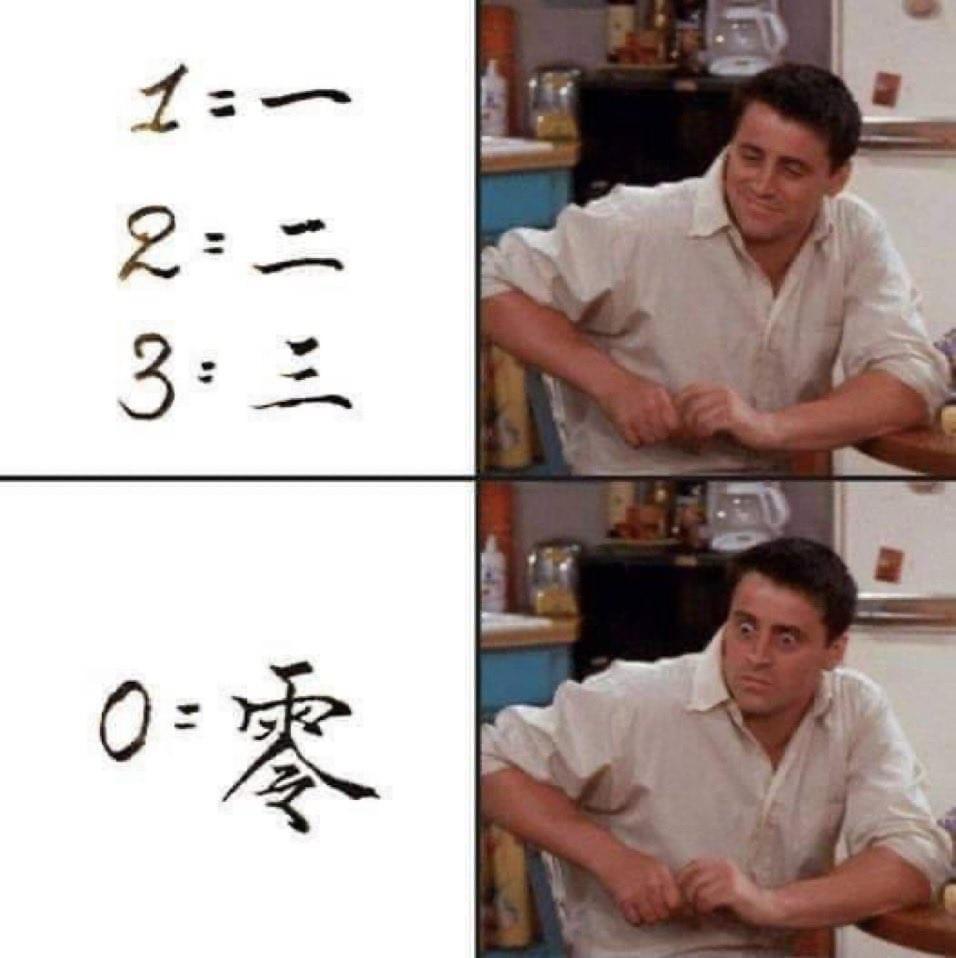this post was submitted on 29 Apr 2024
983 points (99.3% liked)
Memes
52312 readers
919 users here now
Rules:
- Be civil and nice.
- Try not to excessively repost, as a rule of thumb, wait at least 2 months to do it if you have to.
founded 6 years ago
MODERATORS
you are viewing a single comment's thread
view the rest of the comments
view the rest of the comments

ITT, a bunch of people who know literally nothing about this subject offering explanations.
The character 零 ("líng") contains a semantic component (on the top) and a sound component (on the bottom), the semantic component is 雨, meaning rain, and the sound component is 令 "lìng".
The word initially referred to very light rain and so the character essentially means "the type of rain that sounds like lìng". For whatever reason the meaning drifted from very light rain towards "barely any" and then "nothing/zero".
The bottom/top usage is simple, the "zero" is the receiving hole and the "one" is the penetrating appendage, i.e. the submissive versus the dominant partner. That usage is definitely slang, though!
So basically the word for zero is "drizzle"?
That's awesome
Ultimately that's the origin of the character. Although it's quite common to see "〇" in written shorthand when 零 is being used as a middle or final zero in a number otherwise written in characters, like 906 could be written as 九零六 or 九〇六.
So my Chinese is pretty distant from actual usage, but when did 906 stop being 九百六?
In spoken language 九百六 isn't 906 but 960 ( shortened version of 九百六十), 906 is 九百零六.
Sorry, it wasn't clear at all - that's meant to be a number string, like for a key code or phone number.
Ah! Makes sense!
Thank you for giving the correct explanation. Pretty sure all those other "explanations" are just jokes though.
What about 无, In what context is that used?
To not have or be without, more of a verb, somewhat literary.